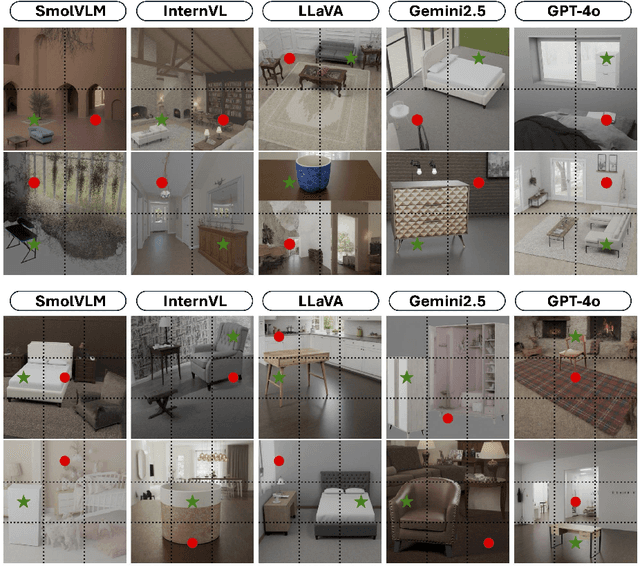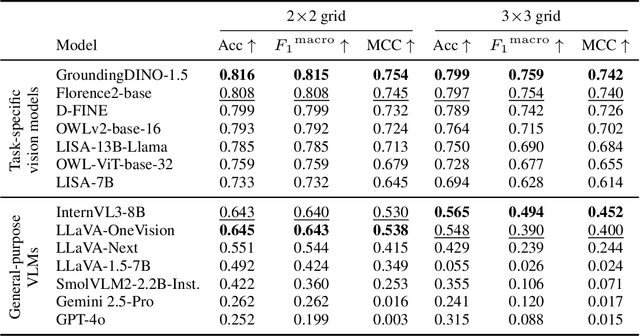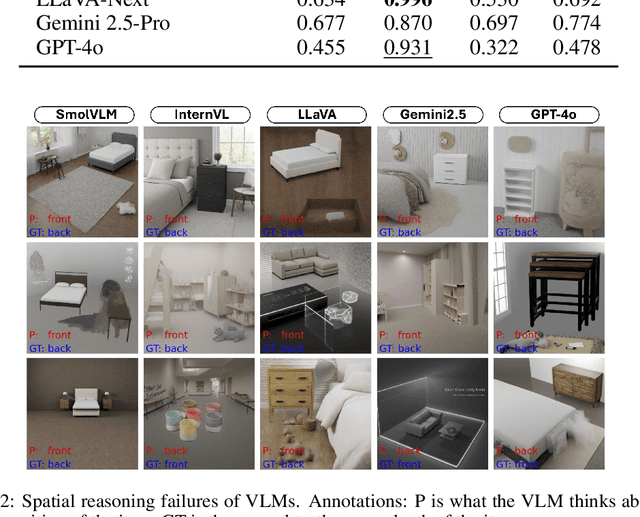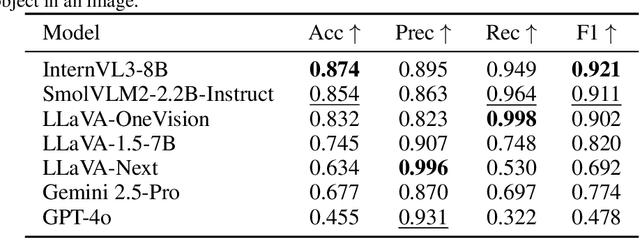Kai Zhao
MetaSynth: Multi-Agent Metadata Generation from Implicit Feedback in Black-Box Systems
Oct 01, 2025Abstract:Meta titles and descriptions strongly shape engagement in search and recommendation platforms, yet optimizing them remains challenging. Search engine ranking models are black box environments, explicit labels are unavailable, and feedback such as click-through rate (CTR) arrives only post-deployment. Existing template, LLM, and retrieval-augmented approaches either lack diversity, hallucinate attributes, or ignore whether candidate phrasing has historically succeeded in ranking. This leaves a gap in directly leveraging implicit signals from observable outcomes. We introduce MetaSynth, a multi-agent retrieval-augmented generation framework that learns from implicit search feedback. MetaSynth builds an exemplar library from top-ranked results, generates candidate snippets conditioned on both product content and exemplars, and iteratively refines outputs via evaluator-generator loops that enforce relevance, promotional strength, and compliance. On both proprietary e-commerce data and the Amazon Reviews corpus, MetaSynth outperforms strong baselines across NDCG, MRR, and rank metrics. Large-scale A/B tests further demonstrate 10.26% CTR and 7.51% clicks. Beyond metadata, this work contributes a general paradigm for optimizing content in black-box systems using implicit signals.
Spatial Reasoning in Foundation Models: Benchmarking Object-Centric Spatial Understanding
Sep 26, 2025



Abstract:Spatial understanding is a critical capability for vision foundation models. While recent advances in large vision models or vision-language models (VLMs) have expanded recognition capabilities, most benchmarks emphasize localization accuracy rather than whether models capture how objects are arranged and related within a scene. This gap is consequential; effective scene understanding requires not only identifying objects, but reasoning about their relative positions, groupings, and depth. In this paper, we present a systematic benchmark for object-centric spatial reasoning in foundation models. Using a controlled synthetic dataset, we evaluate state-of-the-art vision models (e.g., GroundingDINO, Florence-2, OWLv2) and large VLMs (e.g., InternVL, LLaVA, GPT-4o) across three tasks: spatial localization, spatial reasoning, and downstream retrieval tasks. We find a stable trade-off: detectors such as GroundingDINO and OWLv2 deliver precise boxes with limited relational reasoning, while VLMs like SmolVLM and GPT-4o provide coarse layout cues and fluent captions but struggle with fine-grained spatial context. Our study highlights the gap between localization and true spatial understanding, and pointing toward the need for spatially-aware foundation models in the community.
Millisecond-Response Tracking and Gazing System for UAVs: A Domestic Solution Based on "Phytium + Cambricon"
Sep 04, 2025Abstract:In the frontier research and application of current video surveillance technology, traditional camera systems exhibit significant limitations of response delay exceeding 200 ms in dynamic scenarios due to the insufficient deep feature extraction capability of automatic recognition algorithms and the efficiency bottleneck of computing architectures, failing to meet the real-time requirements in complex scenes. To address this issue, this study proposes a heterogeneous computing architecture based on Phytium processors and Cambricon accelerator cards, constructing a UAV tracking and gazing system with millisecond-level response capability. At the hardware level, the system adopts a collaborative computing architecture of Phytium FT-2000/4 processors and MLU220 accelerator cards, enhancing computing power through multi-card parallelism. At the software level, it innovatively integrates a lightweight YOLOv5s detection network with a DeepSORT cascaded tracking algorithm, forming a closed-loop control chain of "detection-tracking-feedback". Experimental results demonstrate that the system achieves a stable single-frame comprehensive processing delay of 50-100 ms in 1920*1080 resolution video stream processing, with a multi-scale target recognition accuracy of over 98.5%, featuring both low latency and high precision. This study provides an innovative solution for UAV monitoring and the application of domestic chips.
PoRe: Position-Reweighted Visual Token Pruning for Vision Language Models
Aug 25, 2025Abstract:Vision-Language Models (VLMs) typically process a significantly larger number of visual tokens compared to text tokens due to the inherent redundancy in visual signals. Visual token pruning is a promising direction to reduce the computational cost of VLMs by eliminating redundant visual tokens. The text-visual attention score is a widely adopted criterion for visual token pruning as it reflects the relevance of visual tokens to the text input. However, many sequence models exhibit a recency bias, where tokens appearing later in the sequence exert a disproportionately large influence on the model's output. In VLMs, this bias manifests as inflated attention scores for tokens corresponding to the lower regions of the image, leading to suboptimal pruning that disproportionately retains tokens from the image bottom. In this paper, we present an extremely simple yet effective approach to alleviate the recency bias in visual token pruning. We propose a straightforward reweighting mechanism that adjusts the attention scores of visual tokens according to their spatial positions in the image. Our method, termed Position-reweighted Visual Token Pruning, is a plug-and-play solution that can be seamlessly incorporated into existing visual token pruning frameworks without any changes to the model architecture or extra training. Extensive experiments on LVLMs demonstrate that our method improves the performance of visual token pruning with minimal computational overhead.
CC-Time: Cross-Model and Cross-Modality Time Series Forecasting
Aug 17, 2025



Abstract:With the success of pre-trained language models (PLMs) in various application fields beyond natural language processing, language models have raised emerging attention in the field of time series forecasting (TSF) and have shown great prospects. However, current PLM-based TSF methods still fail to achieve satisfactory prediction accuracy matching the strong sequential modeling power of language models. To address this issue, we propose Cross-Model and Cross-Modality Learning with PLMs for time series forecasting (CC-Time). We explore the potential of PLMs for time series forecasting from two aspects: 1) what time series features could be modeled by PLMs, and 2) whether relying solely on PLMs is sufficient for building time series models. In the first aspect, CC-Time incorporates cross-modality learning to model temporal dependency and channel correlations in the language model from both time series sequences and their corresponding text descriptions. In the second aspect, CC-Time further proposes the cross-model fusion block to adaptively integrate knowledge from the PLMs and time series model to form a more comprehensive modeling of time series patterns. Extensive experiments on nine real-world datasets demonstrate that CC-Time achieves state-of-the-art prediction accuracy in both full-data training and few-shot learning situations.
CodeBoost: Boosting Code LLMs by Squeezing Knowledge from Code Snippets with RL
Aug 07, 2025Abstract:Code large language models (LLMs) have become indispensable tools for building efficient and automated coding pipelines. Existing models are typically post-trained using reinforcement learning (RL) from general-purpose LLMs using "human instruction-final answer" pairs, where the instructions are usually from manual annotations. However, collecting high-quality coding instructions is both labor-intensive and difficult to scale. On the other hand, code snippets are abundantly available from various sources. This imbalance presents a major bottleneck in instruction-based post-training. We propose CodeBoost, a post-training framework that enhances code LLMs purely from code snippets, without relying on human-annotated instructions. CodeBoost introduces the following key components: (1) maximum-clique curation, which selects a representative and diverse training corpus from code; (2) bi-directional prediction, which enables the model to learn from both forward and backward prediction objectives; (3) error-aware prediction, which incorporates learning signals from both correct and incorrect outputs; (4) heterogeneous augmentation, which diversifies the training distribution to enrich code semantics; and (5) heterogeneous rewarding, which guides model learning through multiple reward types including format correctness and execution feedback from both successes and failures. Extensive experiments across several code LLMs and benchmarks verify that CodeBoost consistently improves performance, demonstrating its effectiveness as a scalable and effective training pipeline.
VL-CLIP: Enhancing Multimodal Recommendations via Visual Grounding and LLM-Augmented CLIP Embeddings
Jul 22, 2025Abstract:Multimodal learning plays a critical role in e-commerce recommendation platforms today, enabling accurate recommendations and product understanding. However, existing vision-language models, such as CLIP, face key challenges in e-commerce recommendation systems: 1) Weak object-level alignment, where global image embeddings fail to capture fine-grained product attributes, leading to suboptimal retrieval performance; 2) Ambiguous textual representations, where product descriptions often lack contextual clarity, affecting cross-modal matching; and 3) Domain mismatch, as generic vision-language models may not generalize well to e-commerce-specific data. To address these limitations, we propose a framework, VL-CLIP, that enhances CLIP embeddings by integrating Visual Grounding for fine-grained visual understanding and an LLM-based agent for generating enriched text embeddings. Visual Grounding refines image representations by localizing key products, while the LLM agent enhances textual features by disambiguating product descriptions. Our approach significantly improves retrieval accuracy, multimodal retrieval effectiveness, and recommendation quality across tens of millions of items on one of the largest e-commerce platforms in the U.S., increasing CTR by 18.6%, ATC by 15.5%, and GMV by 4.0%. Additional experimental results show that our framework outperforms vision-language models, including CLIP, FashionCLIP, and GCL, in both precision and semantic alignment, demonstrating the potential of combining object-aware visual grounding and LLM-enhanced text representation for robust multimodal recommendations.
Simple Graph Contrastive Learning via Fractional-order Neural Diffusion Networks
Apr 24, 2025Abstract:Graph Contrastive Learning (GCL) has recently made progress as an unsupervised graph representation learning paradigm. GCL approaches can be categorized into augmentation-based and augmentation-free methods. The former relies on complex data augmentations, while the latter depends on encoders that can generate distinct views of the same input. Both approaches may require negative samples for training. In this paper, we introduce a novel augmentation-free GCL framework based on graph neural diffusion models. Specifically, we utilize learnable encoders governed by Fractional Differential Equations (FDE). Each FDE is characterized by an order parameter of the differential operator. We demonstrate that varying these parameters allows us to produce learnable encoders that generate diverse views, capturing either local or global information, for contrastive learning. Our model does not require negative samples for training and is applicable to both homophilic and heterophilic datasets. We demonstrate its effectiveness across various datasets, achieving state-of-the-art performance.
Efficient Federated Split Learning for Large Language Models over Communication Networks
Apr 20, 2025



Abstract:Fine-tuning pre-trained large language models (LLM) in a distributed manner poses significant challenges on resource-constrained edge devices. To address this challenge, we propose FedsLLM, a novel framework that integrates split federated learning with parameter-efficient fine-tuning techniques. By leveraging model splitting and Low-Rank Adaptation (LoRA), FedsLLM reduces the computational burden on edge devices. Furthermore, the introduction of a federated server facilitates parallel training and enhances privacy. To accommodate heterogeneous communication conditions and diverse computational capabilities of edge devices, as well as the impact of LoRA rank selection on model convergence and training cost, we formulate a joint optimization problem. The formulated problem jointly optimizes subchannel allocation, power control, model splitting point selection, and LoRA rank configuration, all aimed at minimizing total training delay. An alternating optimization algorithm is developed to efficiently solve this problem and accelerate the training process. Simulation results demonstrate that the proposed FedsLLM framework achieves comparable model accuracy while significantly reducing client-side computational requirements. Furthermore, the proposed resource allocation scheme and adaptive LoRA rank selection strategy notably reduce the training latency compared to conventional approaches.
Zero-Shot Image-Based Large Language Model Approach to Road Pavement Monitoring
Apr 09, 2025Abstract:Effective and rapid evaluation of pavement surface condition is critical for prioritizing maintenance, ensuring transportation safety, and minimizing vehicle wear and tear. While conventional manual inspections suffer from subjectivity, existing machine learning-based methods are constrained by their reliance on large and high-quality labeled datasets, which require significant resources and limit adaptability across varied road conditions. The revolutionary advancements in Large Language Models (LLMs) present significant potential for overcoming these challenges. In this study, we propose an innovative automated zero-shot learning approach that leverages the image recognition and natural language understanding capabilities of LLMs to assess road conditions effectively. Multiple LLM-based assessment models were developed, employing prompt engineering strategies aligned with the Pavement Surface Condition Index (PSCI) standards. These models' accuracy and reliability were evaluated against official PSCI results, with an optimized model ultimately selected. Extensive tests benchmarked the optimized model against evaluations from various levels experts using Google Street View road images. The results reveal that the LLM-based approach can effectively assess road conditions, with the optimized model -employing comprehensive and structured prompt engineering strategies -outperforming simpler configurations by achieving high accuracy and consistency, even surpassing expert evaluations. Moreover, successfully applying the optimized model to Google Street View images demonstrates its potential for future city-scale deployments. These findings highlight the transformative potential of LLMs in automating road damage evaluations and underscore the pivotal role of detailed prompt engineering in achieving reliable assessments.
 Add to Chrome
Add to Chrome Add to Firefox
Add to Firefox Add to Edge
Add to Edge